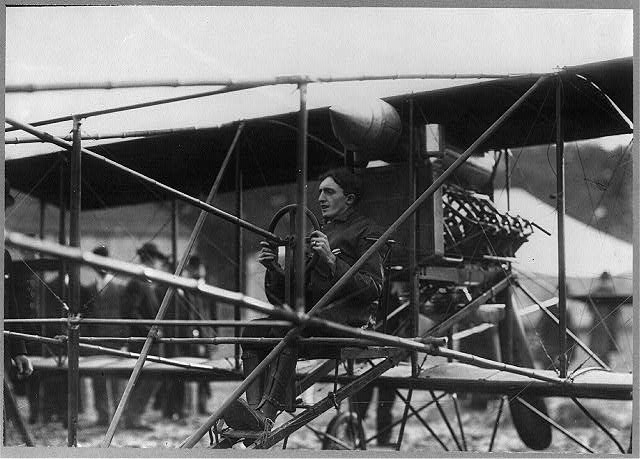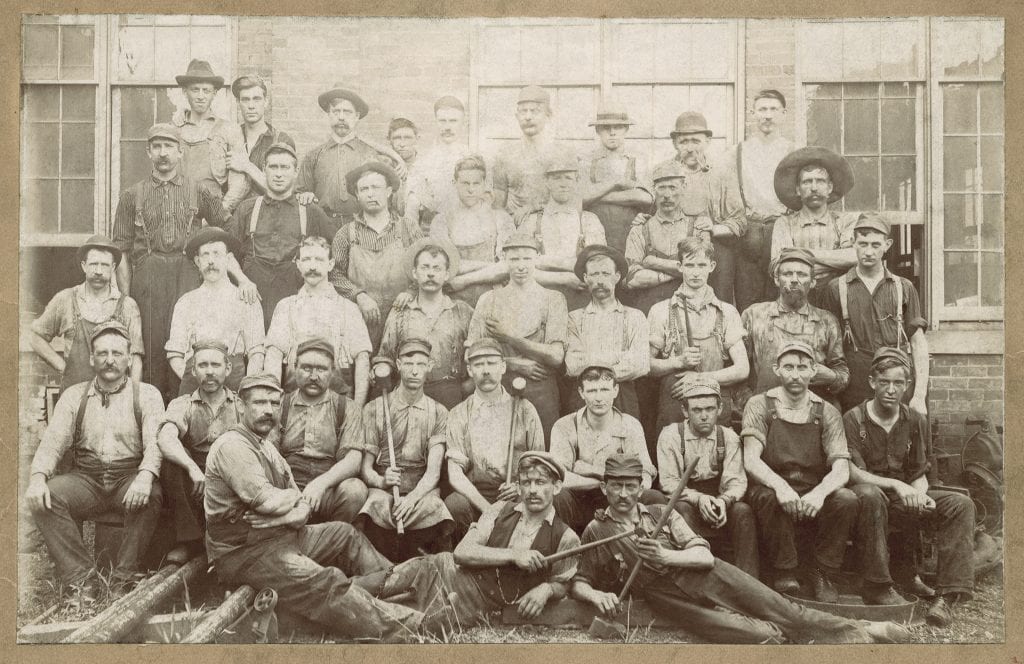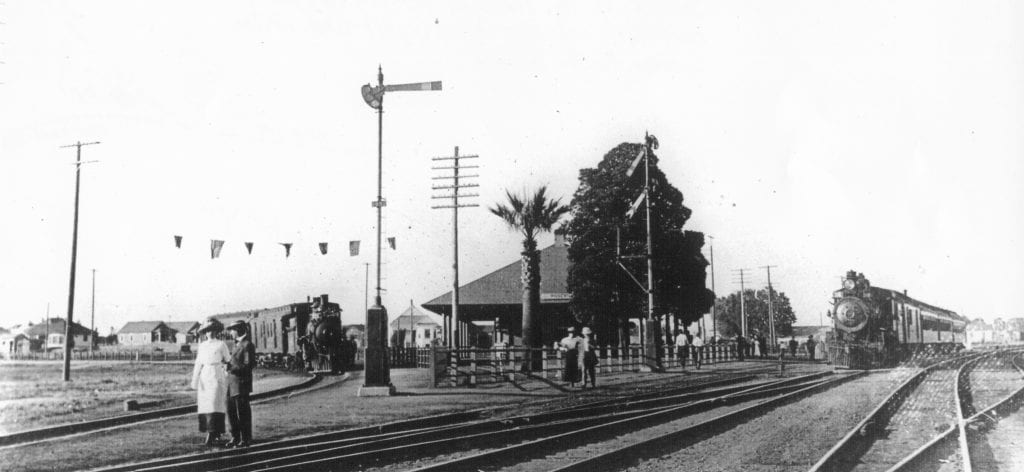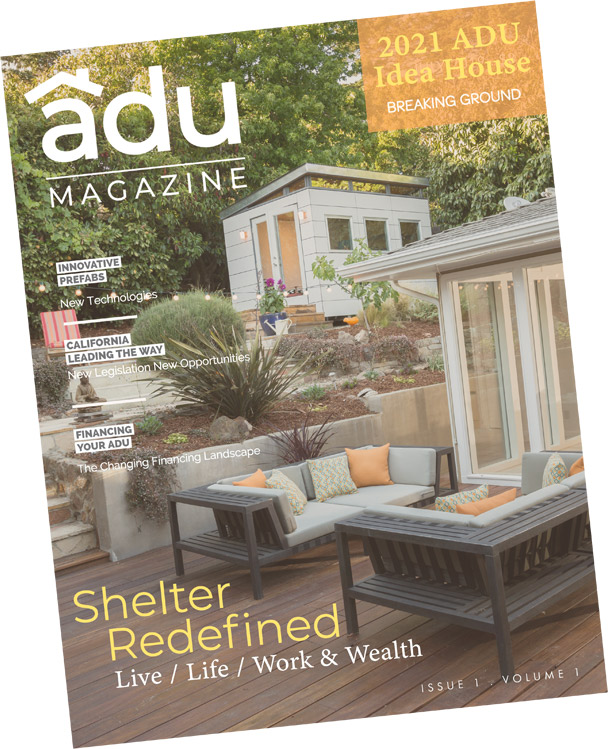
History of the ADU Idea House
The 2021 ADU Idea House, affectionately called “The Rail House,” is one of the most unique homes of its kind. Now more than 110 years old, it represents not only the prototypical older house renovation project, but a classic piece of American and California history unlike any other.

Built sometime prior to 1909/1910, our home starts freshly constructed from old-growth redwood as we enter the 20th century. To understand its origin, one must take a moment to reflect on times past.
At the time of its construction, William Howard Taft was President of the United States. America stood at just 45 states. California, now our most populous state, had fewer than 2.4 million people (nearly half of which lived in just the three cities of Los Angeles, San Francisco, and Oakland).
In 1910 Halley’s Comet passes the earth, not to be seen again until 1986. The first public radio broadcast takes place from The Metropolitan Opera House in New York.
George V becomes King of the United Kingdom of Great Britain and Ireland upon the death of his father Edward VII. The National Association for the Advancement of Colored People (NAACP) holds its second formal meeting in New York. The nation’s first female police officer is inducted into the LAPD. The Boy Scouts of America is established. Yellow Cab is first founded.


The Philadelphia Athletics defeat the Chicago Cubs to clinch the 1910 Worlds Series in Game 5.
Donau strides on in grand style to wins the Kentucky Derby. The Mexican Revolution Begins. Physicist Robert Millikan demonstrates the atomic structure of electricity. Charles Hamilton makes an historic first 1-day round-trip flight from NY to Philadelphia breaking the air record, and the 1st airship goes into service in Germany.

It is a time of great optimism prior to World War I, which will engulf the planet just four years later. America is emerging as a modern industrial power but is still a relatively underdeveloped economy that functions isolated from global interests. Growth and the economy are creating profound social and economic changes to the most basic foundations of business, labor, and government.
As we enter the century, most Americans worked on farms or were employed in small stores, factories, or mills. Here in the City of Roseville, life was just blossoming in 1910.

The town started as a settlement growing around a stagecoach station but is perhaps most known for its connection to rail. The California Central Railroad line expanded out from Sacramento towards the mountains and was named Junction. Junction eventually became known as Roseville, and Junction Boulevard still lies at the center of the city.
As fate would have it, rail stations and facilities moved to Roseville’s neighbor, the City of Rocklin, but with the influence of some enterprising citizens was eventually brought back to Roseville. In 1910, following the move, the City of Roseville incorporated and expanded to more than 100 varied types of structures (including what was the world’s largest ice manufacturing plant).

The history of rail in the area is linked closely to that of the home. The city was a railroad town with an extensive rail presence for decades, with the railroad at one time employing up to 1,225 people of the 6,500 population in 1929. Union Pacific is still a large employer in the town today.

In 1909, a railroad supervisors family purchased several lots across the street from the new rail yard in Roseville after its transition back from the nearby City of Rocklin. Eventually, selling many of these to neighbors during the booming local construction period that followed. At the time there was an exodus of inhabitants and homes from Rocklin and the surrounding area for work to what would become the City of Roseville. Some homes were actually physically lifted and transported to Roseville, quite a feat for the day.

It is believed the Rail House is one of these. Originally built in Rocklin, or Marysville (depending on which records reviewed and family history), it was transported here to Roseville on wagons and carts pulled by oxen and horses in 1910 just as the city was incorporated. Beyond being classically noted as a more traditional “railroad home” with certain square like features and appearance, the home is also unique in that it appears to have been a kit home. Popularized by Sears and their mail-order home catalogs, many of these kit homes were constructed by a variety of builders and shipped by rail car to quickly meet the housing requirements of growing rail and factory communities.
 The home today still has markings and bares an actual wood plaque nailed into the basement rafters referencing framing wood numbers used from a series of crates. The Rail House though, predates Sears and historical Aladdin home brands – this makes it one of the earliest examples of a prefabricated/kit home in American History.
The home today still has markings and bares an actual wood plaque nailed into the basement rafters referencing framing wood numbers used from a series of crates. The Rail House though, predates Sears and historical Aladdin home brands – this makes it one of the earliest examples of a prefabricated/kit home in American History.
The Rail House was located on the primary city street that served as the main boulevard for old town Roseville. It was a prominent location for residences in the old neighborhood that was just over the bridge to the original downtown area (today, still the busiest residential street in the city, with over 200,000 cars passing the home monthly). It was a booming time with infrastructure developed to accommodate rail lines and growth.

Eventually, the original owner’s nephew, who would himself be a lifelong railroad man, moved into the residence with his wife and raised his family there for many years. Injured in a rail accident, he eventually transferred to administration and later retired and lived in Sacramento.
Over the years the home changed hands with several residents, undergoing some design changes, until the 1970s where it stayed with a Silicon Valley employee who intended to eventually move here retire. Never ending up making the move, the home was a long-term rental (at one time back to family members of previous owners) and then sat for a time before its acquisition to be our 2021 ADU Idea House.






